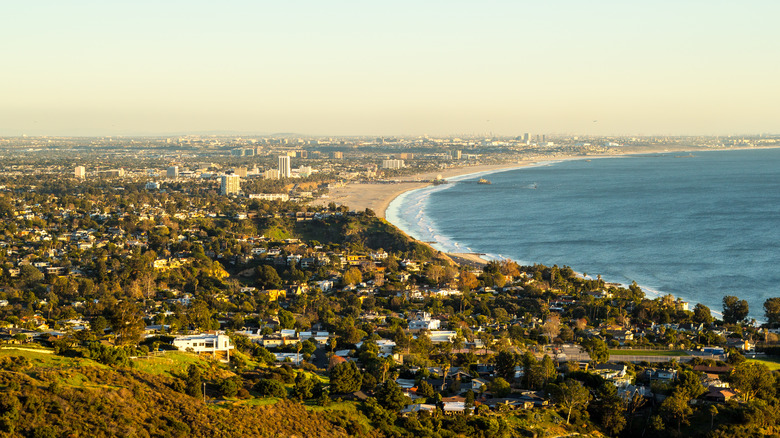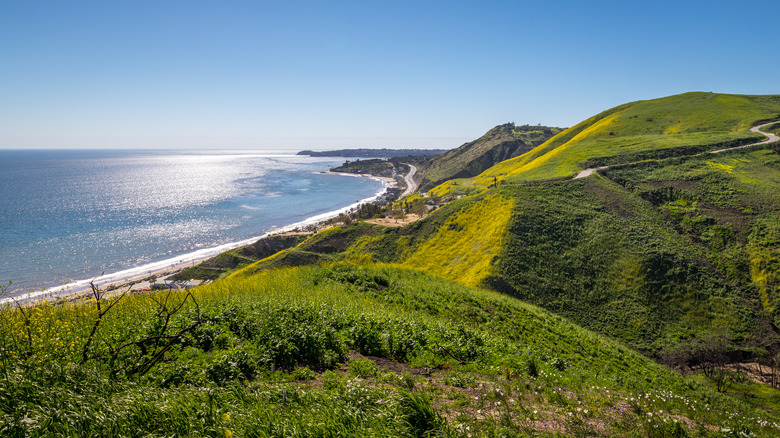Nestled in a concrete labyrinth underneath the Hollywood sign, Los Angeles embodies a world of pop culture bylines, ritzy residential districts, and trendsetting coffee shops. While the lifestyles inside the City of Angels may seem like a Southern California dream to tourists, finding peace outside the city lights can be difficult, often requiring intentional effort. However, Los Angeles County has much more to offer its tourist population than Sunset Boulevard — it’s also rich in lush, green spaces that allow visitors to disconnect from their routines and step into the revitalizing state of nature. LA County features nearly 60 hiking trails catering to outdoor wilderness enthusiasts eager to step outside the city’s concrete walls and indulge in a peaceful, picturesque retreat.
Wedged in the heart of the Santa Monica Mountains and bordering downtown Santa Monica and the shores of Malibu lies one of the most picturesque hiking areas in the Golden State. Topanga State Park is no hidden gem in LA County, as its winding dirt paths and panoramic views mean both locals and visiting guests have marked this park as their usual Saturday morning hiking grounds. Stretching an incredible 11,525 acres, it’s one of the largest parks in the Santa Monica Mountains National Recreation Area, covered in oak, laurel, and walnut woodlands. The terrain forged in these mountains is home to cascading waterfalls, abundant greenery, and a thriving population of indigenous wildlife, creating a natural epicenter for those seeking a crisp breath of fresh air.
Los Leones and the Backbone Trail

Topanga State Park is a nature reserve that requires several visits to fully understand the beauty of its trails. The winding network of designated pathways comprises several breathtaking loop trails, yet none quite compare to the beauty and heritage of the Backbone Trail. This 64-mile trek was once chosen as LA’s premier hiking trail by The New York Times Magazine. It tethers the regions of Will Rogers Historic State Park, Topanga State Park, and Point Mugu State Park within this 60,000-acre portion of the Santa Monica Mountains. The eastern part of the trail begins in Will Rogers Historic State Park, eventually leading adventurous hikers all the way to Santa Ynez Falls in Topanga State Park. A short day trip from LA County, the park is the perfect excuse to escape the hustle and bustle of LA.
For the ocean-view seeker, Los Leones Trail boasts astounding views of the entire Malibu coastline, with the majority of the trail rimmed with wildflowers and paralleling a picturesque landscape of varying shades of green. This beautiful 1.3-mile loop guides hikers through the flowering canyon before ascending the peak of the Santa Monica mountains. The entrance to this trail can be accessed near Pacific Palisades, right off Malibu’s Pacific Coast Highway. While beautiful in all seasons, the landscape reaches its pinnacle of beauty during the spring months when the region receives its highest percentage of rainfall, bringing new life and restoration to the land.
A park of history and hiking

Topanga State Park might be best described as a patch of paradise that embodies why tourists worldwide are drawn to Southern California’s coastline. Turning your gaze to the west, your eyes will skim the treetops of Topanga Canyon, while the upscale neighborhood of Brentwood lies to the south. According to AllTrails, Topanga State Park is the best in California, with stunning views of the glistening Pacific Ocean and plenty to keep visitors occupied. Today, Topanga State Park is considered the largest patch of wildland in the world that is located entirely within a major city’s boundaries and has a bountiful collection of 36 miles of incredible hiking trails.
While today it is best known for its scenic hiking trails, Topanga State Park has a long, rich history dating back thousands of years. This dry, mountainous region was first inhabited by various groups of indigenous people, including the Chumash and Tongva tribes. These native tribes occupied the terrain an estimated 8,000 to 10,000 years ago, cultivating the landscape and living off of the abundant flora and fauna of the mountains. It wasn’t until the 1920s that the surrounding Topanga Canyon saw an influx of visitors, and Topanga State Park officially opened its collection of trails to locals and tourists in 1973. The trails in these mountains are still a coveted obsession among equestrians, hikers, and mountain bikers.

